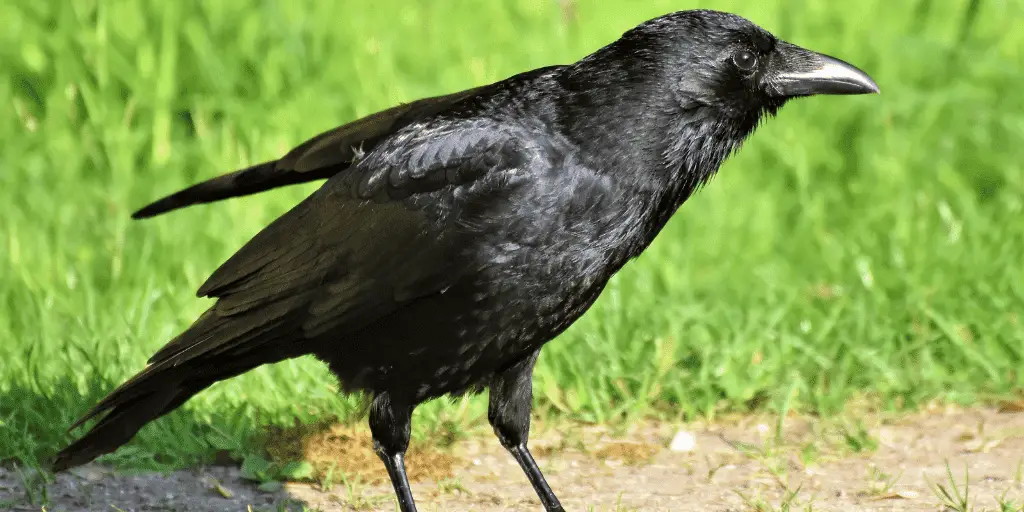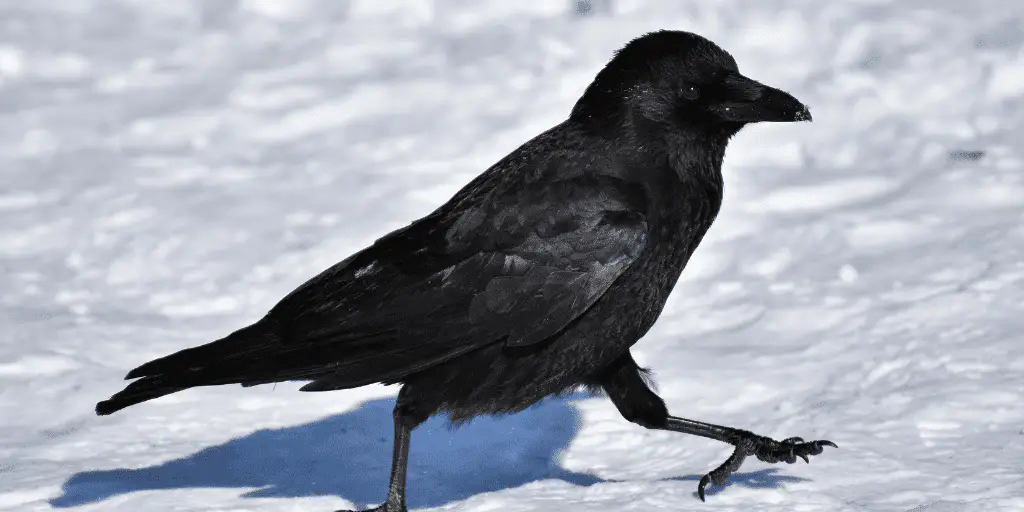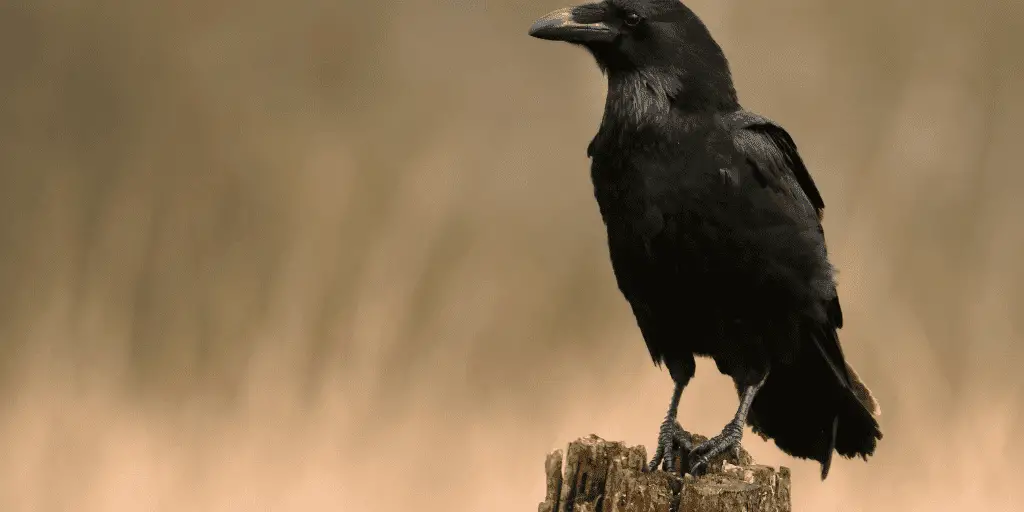Curious about the possibility of a raven as your next pet? These intelligent birds captivate with their complex behaviors and long lifespans, but owning one comes with significant challenges. From legal hurdles to ethical considerations and the intense commitment required, this article delves into what it truly means to care for a raven.
Key Takeaways:
- Ravens are highly intelligent and social birds, requiring complex mental stimulation and social interaction, which can be challenging to provide in a domestic setting. They form lifelong pair bonds and engage in communal activities, aspects of their social structure that are difficult to replicate in captivity.
- Legally, ravens are protected under the Migratory Bird Treaty Act, making it illegal to own, capture, kill, or sell them without a permit. Prospective owners must navigate a complex legal process to obtain a permit, which includes demonstrating the ability to provide appropriate care and environment.
- Ethically, keeping a raven as a pet raises concerns about the bird’s welfare and the impact on wild populations. Ravens have specific dietary, habitat, and enrichment needs that must be met to ensure their well-being, and removing them from their natural environment can disrupt ecological balances.
- Ravens can live up to 30 years in the wild, and even longer in captivity, signifying a long-term commitment for any owner. They require a substantial investment of time, resources, and dedication to meet their needs for space, nutrition, and veterinary care.
- Alternatives to pet ownership, such as supporting conservation efforts, engaging in birdwatching, or participating in wildlife rehabilitation, offer ways to appreciate and aid ravens without the ethical dilemmas of keeping them as pets. These activities can provide fulfilling experiences while contributing to the protection and understanding of ravens in their natural habitats.
Can You Have a Pet Raven?
Yes, you can have a pet raven, but it requires a permit due to legal protections, and meeting their complex care needs is challenging.
| Aspect | Details |
| Legal Status & Requirements | – Ravens are protected under the Migratory Bird Treaty Act. |
| – Ownership requires a permit, involving a complex application process to demonstrate the ability to provide proper care. | |
| – State-specific legislation varies, with some states having more stringent laws on exotic pet ownership. | |
| Ethical Considerations | – Concerns include the welfare of the raven, impact on wild populations, and the disruption of ecological balances. |
| – Alternatives like conservation support, birdwatching, or wildlife rehabilitation offer ethical ways to appreciate ravens. | |
| Raven Biology & Behavior | – Ravens are highly intelligent, social birds with a lifespan up to 30 years, requiring complex mental stimulation and social interaction. |
| – They exhibit lifelong pair bonds, engage in communal activities, and have a varied diet, highlighting the challenge of replicating their natural environment in captivity. | |
| Care Requirements | – Suitable habitat: Spacious aviary that allows for flight and exploration, with materials that ensure safety and security. |
| – Nutrition: Balanced diet of proteins, vitamins, and minerals, mimicking their omnivorous feeding habits in the wild. | |
| – Enrichment: Regular mental stimulation through puzzles, toys, and social interaction to prevent behavioral issues. | |
| – Veterinary care: Regular check-ups and access to avian-experienced veterinarians for health maintenance and emergency care. | |
| Challenges of Ownership | – Behavioral: Intelligent and curious nature leads to potential mischief and requires extensive training and supervision. |
| – Legal and Ethical: Navigating legal restrictions, ensuring ethical care, and the moral implications of keeping a wild bird. | |
| – Commitment: Long lifespan and significant resource investment in terms of time, space, and finances. | |
| Alternatives to Ownership | – Conservation efforts: Supporting projects that protect raven habitats and populations. |
| – Birdwatching and nature photography: Engaging in non-intrusive observation and appreciation of ravens in their natural environment. | |
| – Educational opportunities: Participating in workshops, courses, and community involvement to advocate for raven conservation. |
Understanding Ravens

Raven Biology and Behavior
Ravens are substantial in size, with their wingspan stretching nearly four feet across, and they can live up to 30 years in the wild. These birds are omnivorous, feasting on a varied diet from fruits to small animals, and even carrion, showcasing their adaptability in different environments.
Found across the Northern Hemisphere, ravens have made homes in forests, deserts, and mountains, demonstrating their impressive ability to thrive in diverse habitats.
Their intelligence is nothing short of extraordinary. Ravens have been observed using tools, solving complex problems, and even mimicking human speech. Studies have shown that they can plan for future events, a trait once thought to be uniquely human.
For instance, ravens have been known to hide and store food for later consumption, indicating their ability to think ahead. Their adaptability is further seen in their migration patterns, which change with the seasons and food availability, highlighting the complexity of their lifestyle and the challenge of replicating such an environment at home.
The Social Structure of Ravens
Ravens are not loners; they have a rich social tapestry that includes lifelong pair bonds and communal roosting. They engage in playful activities, which are thought to be a form of social bonding and cognitive development. The social hierarchy among ravens is intricate, with certain birds holding more power within a group, which affects their access to resources and mates.
For a raven kept as a pet, this social need is paramount. Without adequate interaction and mental stimulation, they can develop behavioral issues. Observations from the wild and rehabilitation centers show that ravens engage in cooperative behaviors, such as mobbing predators or calling others to a food source, which are critical aspects of their natural life that a pet raven may miss out on.
Legal Considerations
Understanding the Migratory Bird Treaty Act
The Migratory Bird Treaty Act (MBTA) is a critical piece of legislation that has been protecting our feathered friends since 1918. It was established to safeguard migratory bird species from overhunting and poaching, which includes ravens. Under the MBTA, it’s illegal to own, capture, kill, or sell ravens without a permit. The act serves a vital role in conservation by ensuring that bird populations remain stable and thrive.
Many people don’t realize that the MBTA covers a wide array of bird species, not just those that are endangered or threatened. As for ravens, they are smart and sociable creatures, but they are also protected under this act.
Non-compliance can lead to hefty fines or even criminal charges, so it’s crucial to understand the requirements before you consider a raven as a companion. For more information or to apply for the necessary permits, you can visit the U.S. Fish and Wildlife Service website.
State-Specific Legislation on Raven Ownership
The legal tapestry of raven ownership in the United States is as varied as the country’s landscapes. Some states have stringent regulations, while others are more permissive. For instance, states like California have strict exotic pet laws that make raven ownership challenging, if not impossible, for the average person. On the other hand, states like Montana may have more lenient approaches.
Before getting your heart set on a raven, it’s imperative to delve into the specific laws of your state. Contacting your state’s wildlife agency or consulting with a legal expert in exotic pet laws can save you from future headaches. They can provide the most current and detailed information on what’s required to legally keep a raven in your home.
Obtaining a Permit for a Pet Raven

Securing a permit to keep a raven is no walk in the park. The types of permits available can vary, and eligibility criteria are often stringent. The application process typically involves demonstrating that you can provide a suitable environment and care for the raven, which may include specific caging requirements and a diet plan.
Preparation is key when applying for a permit. Expect to provide detailed information about your experience with birds and your reasons for wanting a raven. The review process can be lengthy, and denials are not uncommon, often due to concerns about the bird’s welfare or the applicant’s ability to provide proper care. However, don’t be discouraged—there are success stories of individuals who have navigated the process successfully, and their experiences can provide valuable insights for your own journey.
International Considerations for Raven Ownership
While this guide primarily addresses the U.S. legal framework, it’s worth noting that international readers may face their own set of challenges. Laws regarding the ownership of exotic pets like ravens can vary greatly from country to country. Some nations have strict bans, while others may allow it under certain conditions.
International treaties, such as CITES, play a significant role in the global trade and ownership of wildlife, including ravens. These agreements are designed to ensure that international wildlife trade is sustainable and does not threaten the survival of species.
For those living outside the U.S. or considering an international move, it’s important to research and understand the legal requirements of your destination country. Reliable information can often be found through government wildlife agencies or organizations dedicated to the protection of wildlife.
Ethical Considerations
When the idea of having a pet raven flutters into the mind, it’s accompanied by a flurry of ethical considerations. Ravens are not your typical domestic companions; they are intelligent, wild creatures with complex needs.
The ethical debate isn’t just about the cool factor of having a raven perched on your shoulder—it’s about the bird’s welfare, the preservation of its species, and the moral implications of bringing a wild animal into a human-controlled environment. It’s crucial to weigh the allure of owning such a unique pet against the profound responsibility of ensuring its well-being.
The Welfare of Captive Ravens
Ravens are known for their remarkable intelligence, which means they require ample space to explore, puzzles to solve, and social interaction to thrive. In a typical home setting, meeting these needs can be quite challenging. Without proper care, captive ravens may suffer from a range of welfare issues, such as feather plucking, behavioral disorders, and obesity.
These problems are often symptoms of inadequate environmental enrichment or care. To truly prioritize the health and happiness of a raven, one must strive to replicate their natural habitat as much as possible and be prepared for the long-term commitment this entails. It’s not just about providing a cage, but creating a home that caters to their physical and psychological needs.
Impact on Wild Raven Populations
Taking a raven from the wild or supporting businesses that do can have detrimental effects on wild populations and the ecosystems they inhabit. It’s essential to consider the role ravens play in their natural environment and how removing them can disrupt the balance.
Conservation efforts are vital for the survival of these birds, and pet ownership can sometimes stand in opposition to these initiatives. Breeding ravens for captivity comes with its own set of ethical dilemmas, including maintaining genetic diversity and preventing disease transmission. It’s a complex issue that requires thoughtful consideration of the broader ecological impact.
Alternatives to Pet Ownership
For those enchanted by ravens but mindful of the ethical implications of ownership, there are several rewarding alternatives. Engaging in wildlife rehabilitation offers a hands-on experience with these birds without the permanence of pet ownership.
Supporting raven conservation projects or participating in citizen science initiatives can fulfill the desire to connect with these creatures while contributing to their well-being in the wild. Local wildlife organizations and online communities focused on bird conservation provide ample opportunities for involvement.
By exploring these avenues, individuals can make a positive impact on the lives of ravens and the health of their populations without the ethical concerns that come with keeping one as a pet.
Care Requirements
Creating a Suitable Habitat for Ravens

Imagine a raven’s natural habitat: vast, open, and brimming with opportunities to fly, explore, and interact with various elements. Capturing this essence in captivity is essential.
A raven’s enclosure should be more than just spacious; it needs to be a stimulating environment that allows for flight and exploration. An ideal aviary would measure at least 8 feet in height to accommodate their flight patterns, with a breadth and width allowing ample room for movement.
Materials used should be durable and safe, with a design that prevents escape or injury. Including branches, perches, and both shaded and sunny areas can create a more natural and enriching environment. It’s also crucial to ensure the habitat is secure from predators and environmental hazards, such as toxic plants or extreme weather conditions. Adding toys and elements that encourage natural behaviors can greatly enhance a raven’s quality of life.
Nutritional Needs and Feeding Guidelines
Ravens are omnivores with a penchant for variety. In the wild, they’re scavengers, often consuming a mix of insects, fruits, seeds, and carrion. Replicating this diet means providing a balance of proteins, vitamins, and minerals. Fresh meats, a variety of fruits and vegetables, and the occasional high-quality commercial bird food can make up a suitable diet. Supplements may be necessary to ensure your raven gets all the nutrients it needs.
Feeding should be consistent, with routines that mimic natural foraging behaviors. Introducing new foods gradually can help in maintaining a balanced diet and preventing digestive issues. Monitoring your raven’s health through its diet is a proactive way to ensure its well-being.
Enrichment and Mental Stimulation
Ravens are incredibly intelligent, requiring regular mental stimulation to stay happy and healthy. Without it, they can develop behavioral issues. Enrichment can come in many forms: puzzles that reward problem-solving with treats, toys that encourage play, and training sessions that challenge their intellect and strengthen your bond.
Interaction shouldn’t be limited to structured activities; regular socialization is key. Ravens thrive on attention and can form deep connections with their owners. DIY enrichment, like hiding food for them to find or creating new toys from safe materials, can be both fun and rewarding for your feathered friend.
Health Care and Veterinary Support
Just like any pet, ravens need regular veterinary care. This includes check-ups, vaccinations, and treatments for parasites. Being observant of your raven’s behavior and physical condition is vital, as early detection of health issues can make a significant difference in outcomes.
Finding a vet with experience in avian or exotic pet care is essential. They can guide you through your raven’s health journey, from routine visits to managing age-related conditions. Remember, ravens can live for decades with proper care, so long-term health planning is a must.
Challenges of Ownership
Behavioral Challenges and Training
Ravens are not your average pet; they’re exceptionally intelligent, on par with dolphins and chimpanzees. This intelligence comes with a natural curiosity and a penchant for mischief.
In a home setting, this can translate to stolen shiny objects, unexpected vocal performances, and even damaged belongings. Noise complaints from neighbors are not uncommon, as ravens can be quite vocal, mimicking sounds and creating their own ruckus.
Training a raven requires an extraordinary amount of patience and consistency. Positive reinforcement techniques work best, rewarding desired behaviors and gently discouraging the unwanted ones. However, it’s crucial to understand that even with the most diligent training, a raven’s wild nature can’t be entirely tamed. Setting realistic expectations is key to a harmonious relationship with these birds. They will always require constant supervision and engagement to keep their active minds stimulated and out of trouble.
Before even considering a raven as a pet, it’s imperative to understand the legal landscape. In many places, owning a raven is heavily regulated or outright illegal due to their status as native wild birds. Ignorance of the law is no defense, and violations can lead to hefty fines or even the loss of the bird to authorities.
Beyond legality, there’s a moral dimension to consider. Ravens are wild creatures with complex social behaviors and innate needs that a typical household may not fulfill. Ethical pet ownership involves recognizing and respecting the natural life these birds would have outside of captivity. Prospective raven owners should deeply contemplate whether their desire for a unique pet aligns with the best interests of the animal.
The Commitment of Time and Resources
Ravens can live for up to 40 years in captivity, which is a considerable amount of time to commit to any pet. Prospective owners must be ready for the long haul, which includes not just time but also financial investment. Creating a raven-friendly environment means investing in a secure and spacious enclosure, providing a varied and nutritious diet, and ensuring access to veterinary care specialized in avian medicine.
The costs can add up quickly, from the initial setup to ongoing expenses like food, toys, and medical emergencies. It’s not just about being able to afford it; it’s about being willing to adjust one’s lifestyle to accommodate the needs of a highly intelligent and demanding bird. Before taking the plunge, it’s essential for potential raven owners to honestly assess their readiness to meet these needs consistently over the decades.
Alternatives to Ownership
Supporting Raven Conservation Efforts

If you’re passionate about ravens but not quite ready to take one under your wing as a pet, there are plenty of ways to support these majestic birds. One impactful avenue is contributing to raven conservation efforts. Organizations like the Audubon Society are at the forefront of protecting ravens and their natural habitats. By donating to such groups, you’re helping fund vital research and conservation initiatives.
Volunteering your time can be just as valuable. Many local wildlife rehabilitation centers need hands-on help with their rescued birds, including ravens. Your efforts could directly contribute to the survival and release of these birds back into the wild.
Moreover, citizen science projects offer a unique opportunity to get involved. These projects often rely on everyday people to gather data on bird populations, which is crucial for understanding the effects of habitat destruction, pollution, and climate change on ravens. By participating, you’re not just aiding in their preservation; you’re also becoming part of a larger community dedicated to making a difference.
Engaging in Birdwatching and Nature Photography
Birdwatching and nature photography are wonderful ways to connect with ravens without owning one. When done responsibly, they can be non-intrusive and rewarding. To start, familiarize yourself with the best practices for ethical wildlife observation. This includes keeping a respectful distance and not disrupting the ravens or their habitats.
For the aspiring birdwatcher or photographer, knowing where and when to find ravens is key. These birds are often spotted in wilder, less populated areas, so a bit of travel might be necessary. The right equipment, like binoculars or a camera with a good zoom lens, will enhance your experience. And remember, the early bird catches the worm – or in this case, the best view of the ravens!
Sharing your birdwatching and photography adventures can inspire others. Social media platforms and birdwatching communities are great places to post your findings and connect with fellow raven enthusiasts.
Educational Opportunities and Community Involvement
Diving deeper into the world of ravens can be both fascinating and beneficial to their conservation. Look for lectures, workshops, or online courses that delve into avian biology and conservation. These educational opportunities not only broaden your understanding but also equip you with knowledge to help ravens thrive.
Community involvement is another avenue to explore. Joining local environmental groups or online forums brings you into a network of bird lovers and conservationists. These communities are hubs for sharing experiences and strategies to protect ravens and their ecosystems.
Lastly, don’t underestimate the power of advocacy. Informed citizens can influence policies and practices that impact raven populations. Whether it’s through supporting legislation that protects bird habitats or promoting sustainable practices in your community, your voice can make a difference for these intelligent creatures and the environment they call home.
Legal and Ethical Ways to Interact with Ravens

Participating in Wildlife Rehabilitation
For those who are drawn to ravens and wish to make a positive impact, volunteering at wildlife rehabilitation centers can be an immensely rewarding experience. These centers play a vital role in the rescue, rehabilitation, and eventual release of injured or orphaned ravens.
By getting involved, you can contribute to their noble cause. Volunteers might find themselves preparing food, cleaning enclosures, or even assisting with medical care, under the guidance of trained professionals.
Before you can handle these intelligent birds, you’ll need proper training to ensure their safety—and yours. It’s important to support licensed facilities that adhere to the highest standards of animal care. By doing so, you’re not only helping individual ravens but also contributing to the broader effort of wildlife conservation.
Advocacy and Public Education
Becoming an advocate for ravens means taking active steps to educate others about the challenges these birds face. Habitat loss, pollution, and the illegal pet trade are just a few of the issues that threaten ravens. By participating in community events, school programs, or even online through social media campaigns, you can help spread the word about raven conservation.
Your voice and platform can be powerful tools in advocating for policies and practices that protect ravens and their habitats. Whether it’s through writing articles, organizing workshops, or simply talking to friends and family, every action counts in the fight to ensure a sustainable future for these remarkable birds.
Ethical Guidelines for Interaction
When encountering ravens in the wild, it’s essential to maintain a respectful distance. Observing these birds without interfering allows them to go about their natural behaviors undisturbed.
Feeding wild ravens can lead to habituation, where they become too comfortable with human presence, potentially leading to dangerous situations for both parties. Additionally, disturbing their nests or young can have detrimental effects on their development and survival.
These ethical guidelines are in place to remind us that our fascination with ravens should not come at the expense of their well-being. By observing these birds from afar and resisting the urge to feed or interact with them directly, we can appreciate their beauty and intelligence without causing harm. It’s a delicate balance between admiration and preservation, but one that is necessary for the continued existence of these enigmatic creatures in the wild.
Conclusion
In conclusion, while the idea of having a pet raven may be intriguing due to their impressive intelligence, adaptability, and complex social structures, it is fraught with legal, ethical, and practical challenges.
Ravens are protected under the Migratory Bird Treaty Act, and ownership often requires specific permits that are difficult to obtain. Even if legal hurdles are overcome, the ethical implications of keeping a wild bird with such specialized needs in a domestic setting cannot be ignored.
Ravens require extensive space, mental stimulation, and social interaction, which are hard to provide in a typical household. Additionally, their long lifespan and the potential impact on wild populations must be considered.
For those still captivated by these birds, alternatives such as supporting conservation efforts, engaging in birdwatching, or volunteering at wildlife rehabilitation centers offer ways to connect with ravens without the complexities of ownership.
Ultimately, the well-being of ravens and respect for their natural behaviors should guide any decision regarding their interaction with humans.








